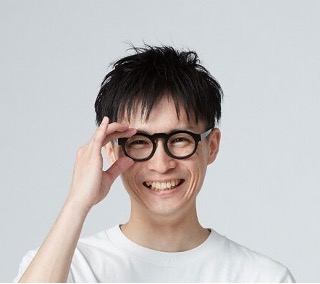Optimizing Edge Perceptual Intelligence for Human-Machine Interaction
by Archan Misra, Singapore Management University
Several pervasive computing applications require breakthroughs in ultra-low energy, real-time, on-device sensing and perception in immersive field environments. Using two exemplar applications, I shall describe several approaches to reduce the complexity, latency and energy of such edge-based DNN inference execution on resource-constrained embedded platforms. The first involves the notion of criticality-aware spatiotemporal prioritization of selected regions from multiple video sensor streams, allowing an edge device to achieve 5-8x increase in DNN processing throughput for urban tracking applications. The second involves the use of new selective execution techniques for AI models for multi-modal human instruction comprehension (combining visual, verbal and gestural input) for natural human-robot interaction. I shall conclude by describing open research questions related to AI-driven joint human-robot task execution, and how these fit into a newly launched M3S research program where SMU is partnering MIT to create related breakthroughs for applications such as airport tarmac operations and online learning.

Bio – Archan Misra is a professor and the vice provost (research) in the School of Information Systems at Singapore Management University. His research interests include problems spanning wireless networking, mobile and pervasive computing, and urban sensing. Misra received a Ph.D. in electrical and computer engineering from the University of Maryland at College Park in May 2000. He chaired the IEEE Computer Society’s Technical Committee on Computer Communications from 2005 to 2007.Archan Misra is Vice Provost (Research) and Professor of Computer Science at Singapore Management University (SMU). Over the past decade, Archan has provided leadership to a number of large-scale research initiatives at SMU, cumulatively worth more than USD $70M, which collectively developed innovative mobile/wearable computing technologies for urban computing applications. He is a current recipient of the prestigious Singapore NRF Investigator grant for sustainable human-machine interaction, and a Program co-PI on the recently launched M3S program with MIT on advances in human-robot co-working. His current research interests lie in ultra-low energy execution of machine perception algorithms on IoT and edge devices to support advances in natural human-machine interaction. Over a 25+ year research career spanning both academics and industry (at IBM Research and Bellcore), Archan has published on, and practically deployed, technologies spanning wireless networking, mobile & wearable sensing and urban mobility analytics. An ACM Distinguished Member, Archan holds a Ph.D. from the University of Maryland at College Park, and chaired the IEEE Computer Society’s Technical Committee on Computer Communications (TCCC) from 2005-2007.
Integrating IoTs into Our Life: Energy-Efficient CMOS-Enabled Biomedical IoT Systems Improving Our Health
by Kiichi Niitsu, Professor, Kyoto University

Bio – Kiichi Niitsu was born in Japan, in 1983. He received the B.S. degree (summa cum laude), M.S. and Ph.D. degrees in electrical engineering from Keio University, Yokohama, Japan, in 2006, 2008, and 2010, respectively. From 2008 to 2010, he was a Research Fellow with the Japan Society for the Promotion of Science, a Research Assistant of the Global Center of Excellence Program, Keio University, and a Collaboration Researcher with the Keio Advanced Research Center. From 2010, he was an Assistant Professor with Gunma University, Kiryu, Japan. Since 2012, he has been a Lecturer with Nagoya University, Nagoya, Japan. Since 2015, he has been a Researcher with Precursory Research for Embryonic Science and Technology, Japan Science and Technology Agency. His current research interest lies in the low-power and high-speed technologies of analog and digital VLSI circuits for biomedical application. He was a recipient of the 2006 KEIO KOUGAKUKAI Award, the 2007 INOSE Science Promotion Award, the 2008 IEEE SSCS Japan Chapter Young Researcher Award and the 2009 IEEE SSCS Japan Chapter Academic Research Award from IEEE Solid-State Circuits Society Japan Chapter, the 2008 FUJIWARA Award from the FUJIWARA foundation, the 2011 YASUJIRO NIWA Outstanding Paper Award, the 2011 FUNAI Research Promotion Award, the 2011 Ando Incentive Prize for the Study of Electronics, the 2011 Ericsson Young Scientist Award, the 2012 ASP-DAC University LSI Design Contest Design Award, the NF Foundation Research and Development Encouragement Award, the AKASAKI Award from Nagoya University, the IEEE Nagoya Section Young Researcher Award, the IEEE Biomedical Circuits and Systems Conference 2016 (BioCAS 2016) Best Paper Award, the 2017 Commendation for Science and Technology by the Minister of Education, Culture, Sports, Science and Technology, the Young Scientists Prize, the 2018 SUEMATSU-Yasuharu Award from IEICE, the 2019 Bioindustry Encourangement Award.
The introduction of toio™ the mobile robot.
by Tetsunori Nakayama, Director, Software Development Engineering, Sony Interactive Entertainment Inc.

Bio – Master’s degree of Science in Mathematics, graduated from Hokkaido University. As an embedded software engineer, he has been engaged in the development of a wide range of digital imaging products. For toio, He developed the basic technology, planned and developed the platform and a lot of titles, and invented the name “toio”. Awards: Sony Outstanding Engineer 2018, Design Intelligence Award Gold Award(Grand Prix), Good Design Gold Award, Digital Ehon Award Grand Prix, and Jury Selection in the Entertainment Division of the 22nd Japan Media Arts Festival.
